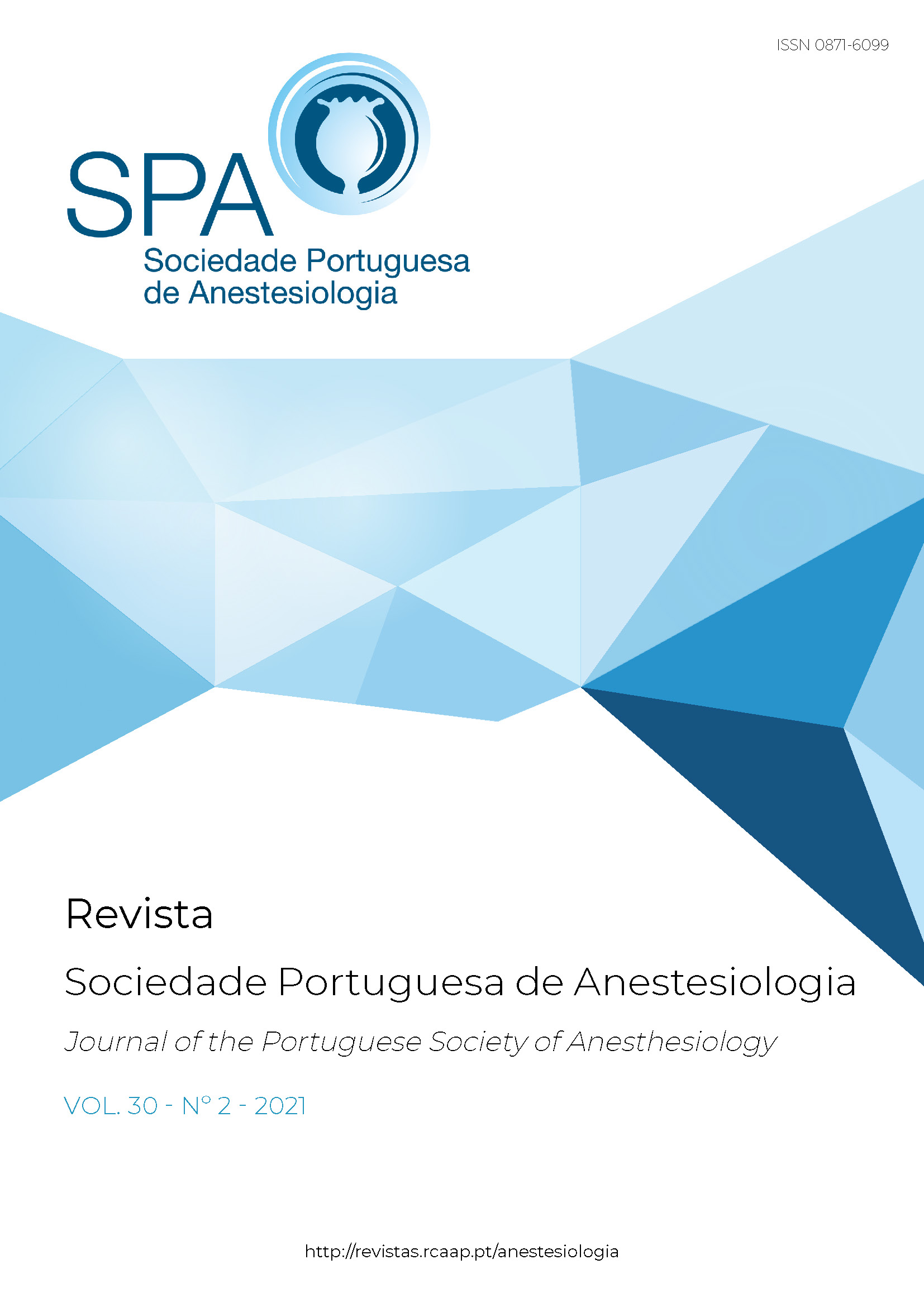Linfoma na Gravidez: Caso Clínico, Gestão Multidisciplinar e Abordagem Anestésica
DOI:
https://doi.org/10.25751/rspa.21536Palavras-chave:
Lymphoma;, Quemotherapy, Anesthesia, Obstetrical, Multidisciplinary CommunicationResumo
O linfoma é o quarto tipo de neoplasia mais frequentemente diagnosticado durante a gravidez, complicando cerca de uma em 6.000 gestações. A abordagem clínica deve ser baseada numa equipa médica multidisciplinar, envolvendo a colaboração de diversas especialidades médicas, de forma a otimizar o bem-estar materno e fetal. O anestesiologista deve reunir informações clínicas do paciente, das diferentes especialidades médicas de forma a definir a melhor abordagem anestésica.
Descrevemos o caso de uma grávida de 35 anos diagnosticada com linfoma do mediastino anterior complicado com derrame pericárdico de grande volume, síndrome da veia cava superior, compressão brônquica pela massa mediastínica e congestão pulmonar com insuficiência respiratória hipoxémica. A grávida foi submetida a cesariana eletiva. A gestão multidisciplinar dessa situação clínica foi fundamental. A abordagem anestésica para este caso foi baseada na melhor técnica anestésica considerando a condição clínica da grávida, os possíveis efeitos colaterais da quimioterapia e o bem-estar do fetal.
Downloads
Referências
2. Hodby K, Fields PA. Management of lymphoma in pregnancy. Obstet Med. 2009 Jun; 2(2): 46–51.
3. Berveiller P, Mir O. Taxanes during pregnancy: probably safe, but still to be optimized. Oncology 2012; 83:239–40.
4. Azim HAJ, Pavlidis N, Peccatori FA. Treatment of the pregnant mother with cancer: a systematic review on the use of cytotoxic, endocrine, targeted agents and immunotherapy during pregnancy. Part II: hematological tumors. Cancer Treat Rev. 2010; 36:110–21.
5. Kalter H, Warkany J. Congenital malformations: etiologic factors and their role in prevention (first of two parts). N Engl J Med. 1983; 308:424–31.
6. Vandenbroucke T, Verheecke M, Calsteren KV, Han S, Claes L, Amant F. Fetal outcome after prenatal exposure to chemotherapy and mechanisms of teratogenicity compared to alcohol and smoking. Expert Opin Drug Saf. 2014; 13: 1653–65.
7. Esposito S, Tenconi R, Preti V, Groppali E, Principi N. Chemotherapy against cancer during pregnancy: A systematic review on neonatal outcomes. Medicine. 2016; 95:38.
8. Kimberly K. Chemotherapeutic Drugs in Pregnancy. Obstet Gynecol Clin N Am. 2005; 32:627 – 640.
9. Huettemann E, Sakka S. Anaesthesia and anti-cancer chemotherapeutic drugs. Current Opinion in Anaesthesiology. 2005; 18:307–314
10. Gudaitytė J, Dvyvlys D, Šimeliūnaitė I. Anaesthetic challenges in cancer patients: current therapies and pain management. Acta Medica Lituanica. 2017; 24:121–127.
11. Rath L, Gullahorn G, Connolly N, Pratt T, Boswell G, Cornelissen C. Anterior mediastinal mass biopsy and resection: anesthetic techniques and perioperative concerns. Semin Cardiothorac Vasc Anesth. 2012; 16:235.
12. Hartigan PM, Ng JM, Gill R. Anesthesia in a Patient with a Large Mediastinal Mass. N Engl J Med. 2018; 379:587.
13. Gardner JC, Royster RL. Airway collapse with an anterior mediastinal mass despite spontaneous ventilation in an adult. Anesth Analg. 2011; 113:239.
14. Dubey PK, Tripathi N. Anesthetic Considerations in a Patient With Large Anterior Mediastinal Mass. J Cardiothorac Vasc Anesth. 2019; 33:1073.
Downloads
Publicado
Como Citar
Edição
Secção
Licença
Direitos de Autor (c) 2021 Mariana Pinto, Joana Varandas, Maria João Freitas, Patrícia Ramos

Este trabalho encontra-se publicado com a Creative Commons Atribuição-NãoComercial 4.0.
Os artigos estão livremente disponíveis para serem lidos, descarregados e partilhados a partir do momento da sua publicação.
A RSPA reserva-se o direito de comercialização do artigo enquanto parte integrante da revista (na elaboração de separatas, por exemplo). O autor deverá acompanhar a carta de submissão com a declaração de cedência de direitos de autor para fins comerciais.
Relativamente à utilização por terceiros a Revista da SPA rege-se pelos termos da licença Creative Commons “Atribuição – uso Não-Comercial (CC BY-NC).
Após publicação na RSPA, os autores ficam autorizados a disponibilizar os seus artigos em repositórios das suas instituições de origem, desde que mencionem sempre onde foram publicados.


